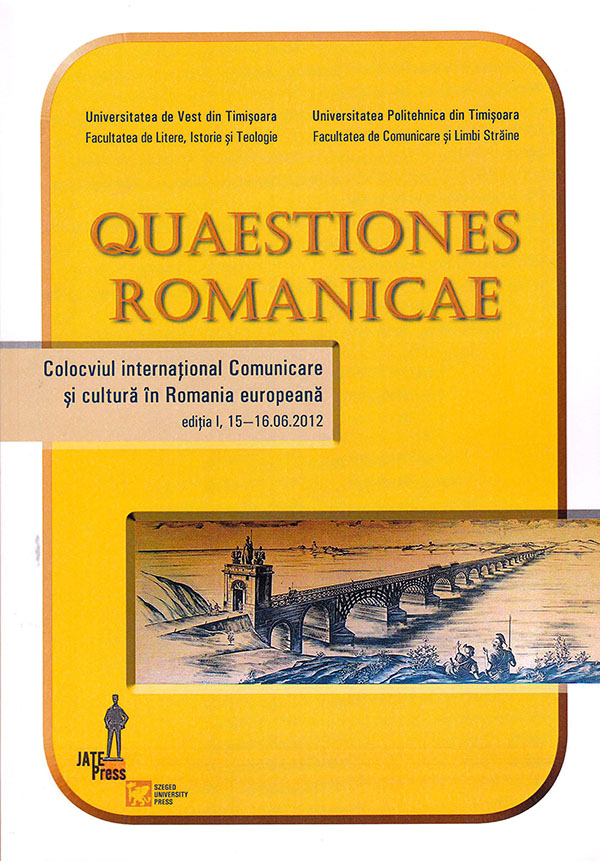Du silence au dialogue
Abstract: In 1919, Raymond Poincaré stated full of admiration and amazement that “The Romanians’ existence is a miracle, and their language an enigma”, thus situating Romania under the species of the sacred, of the fabulous, of the unreal. One speaks of the “Romanian miracle” just as one speaks of the “Greek miracle”. How can one understand the survival of the Latin heritage in all forms of Romanian culture and civilization? Romania can define itself as a Romance individuality only in relation to the space of Latinity, but also to the space of Europe, creating the openness to dialogue and cultural diversity through the network of connections on the horizontal of synchronizations, as well as on the vertical of filiations. The flight of Brâncuşi’s bird, which also unites the Earth and the sky, just like the Column of the Infinite, defying gravity and borders, Enescu’s symphonies that shape the great symphonic music after the chords of the Romanian folk music, the recurrence of certain themes and motifs which Mircea Eliade integrates constantly in the great European and universal circuit of mythology, synchronizing them with the European cultures, all these are some of the answers, indeed some of the fundamentally important answers, that confirm the Latin and European character of the Romanians. This essay focuses on the hermeneutically contrastive analysis of the structures of thought and creation mentioned above, aiming at extending the concept of “reliance” in which Edgar Morin invests the attributes of original connections, of cohesion and coherence, by means of which the dialogue of complexity and diversity is verified and maintained in the space of the Latin unity.
Keywords: myth, flight, cultural dialogue, axis mundi, the isomorphism of ascent.
Résumé: « L’existence des Roumains est un miracle et leur langue est une énigme », s’exclamait Raymond Poincaré en 1919. Ces attributs dont il se sert pour exprimer son étonnement et admiration à la fois, s’enrégimentent sous le signe du sacré, du fabuleux, de l’irréel ! On peut parler du « miracle roumain » comme on parle du « miracle grec »! Comment appréhender la survivance de l’héritage latin dans toutes les formes de la culture et de la civilisation roumaines ? Le vol de l’oiseau de Brancusi qui unit pareil à la Colonne sans fin la Terre au Ciel, défiant la pesanteur et les frontières, les symphonies énesciennes qui rendent universels les accords de la musique populaire roumaine, la récurrence de certains motifs et thèmes que M. Eliade ne cesse d’intégrer dans le grand circuit européen et universel de la mythologie et de synchroniser avec les grandes cultures européennes ne sont que quelques réponses et des plus célèbres aux questions qui reviennent incessamment sur le caractère latin et européen des Roumains. La Roumanie ne saurait être autrement définie en tant qu’individualité romane que rapportée à l’espace de la latinité, à l’Europe aussi, ménageant par le réseau des connexions sur l’horizontale des synchronisations et la verticale des filiations, l’ouverture vers le dialogue et la pluralité culturelle. Le présent ouvrage essaie de focaliser l’intérêt sur la récurrence et la synchronisation de certaines structures de pensée et de création dans une perspective herméneutique, pour « revisiter » ainsi certains « endroits », littéraires ou artistiques, et qui visent à extrapoler, à travers une analyse contrastive, le concept de reliance qu’Edgar Morin investit des attributs des liens originaux, de cohésion et de cohérence, pour justifier et maintenir le dialogue de la complexité et de la diversité dans l’unité romane.
Mots –clés : mythe, vol, dialogue culturel, axe du monde, isomorphisme de la l’ascension.
